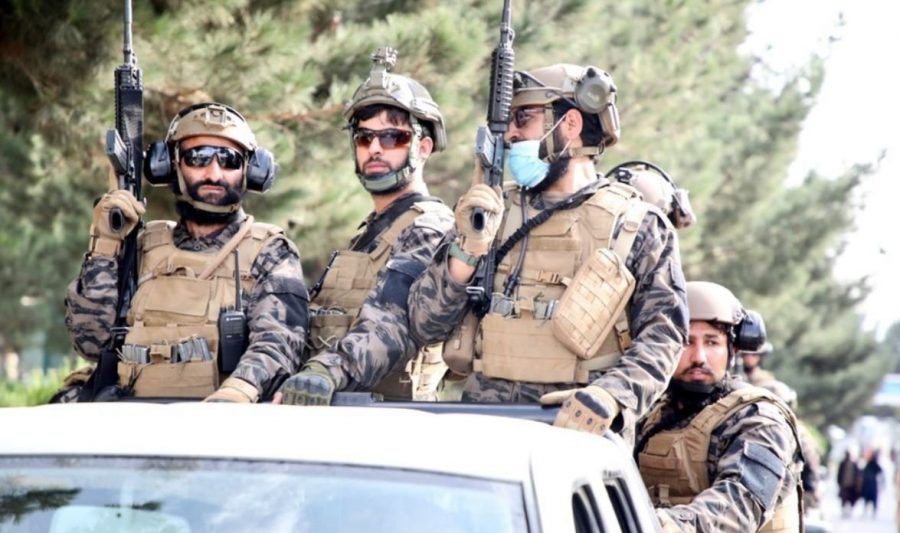Taliban’s Weapon Parade Symbolizes Failure of Afghanistan War
On Wednesday, Sept. 1, the Taliban celebrated their victory in Afghanistan with a parade in Kandahar. It wouldn’t have been that shocking of an event were it not for the main spectacle of the parade — captured military vehicles and weapons, many of them financed by the United States. The captured hardware includes armored vehicles, Black Hawk helicopters, drones and guns. The sight of the Taliban parading around with America’s weapons was a disheartening one.
It is disturbing that the Taliban possesses powerful weapons that might fall into the hands of other terrorist groups like al-Qaeda and could eventually be used against Americans. The risk of this, however, seems minimal compared to the fact that many of these devices, such as Black Hawk helicopters, are complex machines not easily used without training. Additionally, the Taliban possesses neither the materials nor the expertise to repair these devices should they become damaged. Nonetheless, it is still a threat that they will use these weapons with disastrous effects on the international community.
It is disturbing that many of the less complex weapons, like the smaller arms and night vision goggles, might be used against anti-Taliban forces in Afghanistan. Despite their promises to be a more moderate regime, the Taliban has already begun cracking down on internal dissent and attacking protesters who demanded women’s rights. Any attempts at revolution will be hindered by the Taliban’s vastly superior weaponry gained from the United States.
The idea that other foreign powers, namely China, might gain access to this technology and use it to discover U.S. vulnerabilities in weapons and technology is also concerning. Besides the physical components of these weapons, much of what the U.S. left behind contained vital information about the nature of our cybersecurity and communications systems.
To say the retreat from Afghanistan was humiliating for the United States is an understatement. It’s not so much that we chose to leave — 63% of Americans were in favor of the decision to remove troops — but rather the way in which it was carried out. Instead of a smooth, orderly transition of power, the retreat ended up becoming a mad dash to the exits, leaving thousands of Afghans who worked for the U.S. stranded. The weapons we provided to the Afghan army ending up in the hands of the Taliban only underscores the point that the entire war strategy was flawed. On the world stage, the United States looked ineffective and weak, much to the glee of Iran, China and Russia.
The most disheartening part of this entire scene is not the actual threat that these weapons pose: the images of the Taliban sporting these weapons is a symbol of what an enormous waste the war in Afghanistan was.
The United States spent 20 years in Afghanistan. During that time, we spent $2 trillion on the war, or roughly $300 million a day. More than 6,000 Americans were killed, along with thousands of our Afghan and NATO allies. Thousands more returned home injured and traumatized. Millions of Afghans were displaced from their homes.
Looking at photos of the mess and destruction, we must ask ourselves: for what? An analysis by the Council on Foreign Relations concluded that the Taliban is stronger now than it has been at any point in the last 20 years. The Taliban have already begun segregating college classes by gender, banning women from playing sports and beating and whipping protesters. Currently, 61% of Americans believe the war in Afghanistan wasn’t worth it, the same percentage who believed that in 2014.
We fought in Afghanistan to stop it from being a base for terrorism. We sacrificed lives to establish a democratic government with equal rights for women. We spent trillions of dollars setting up the Afghan government so that when we inevitably left, they would be able to protect themselves.
One only has to look at the images of the Taliban soldiers, holding American weapons and parading through city streets, to know that we failed.
Michael Sluck, FCRH ’24, is a political science and computer science major from Verona, N.J.

Michael Sluck is a senior from New Jersey majoring in political science and computer science. He has been copy editing for The Fordham Ram for the entirety...








































































































































































































